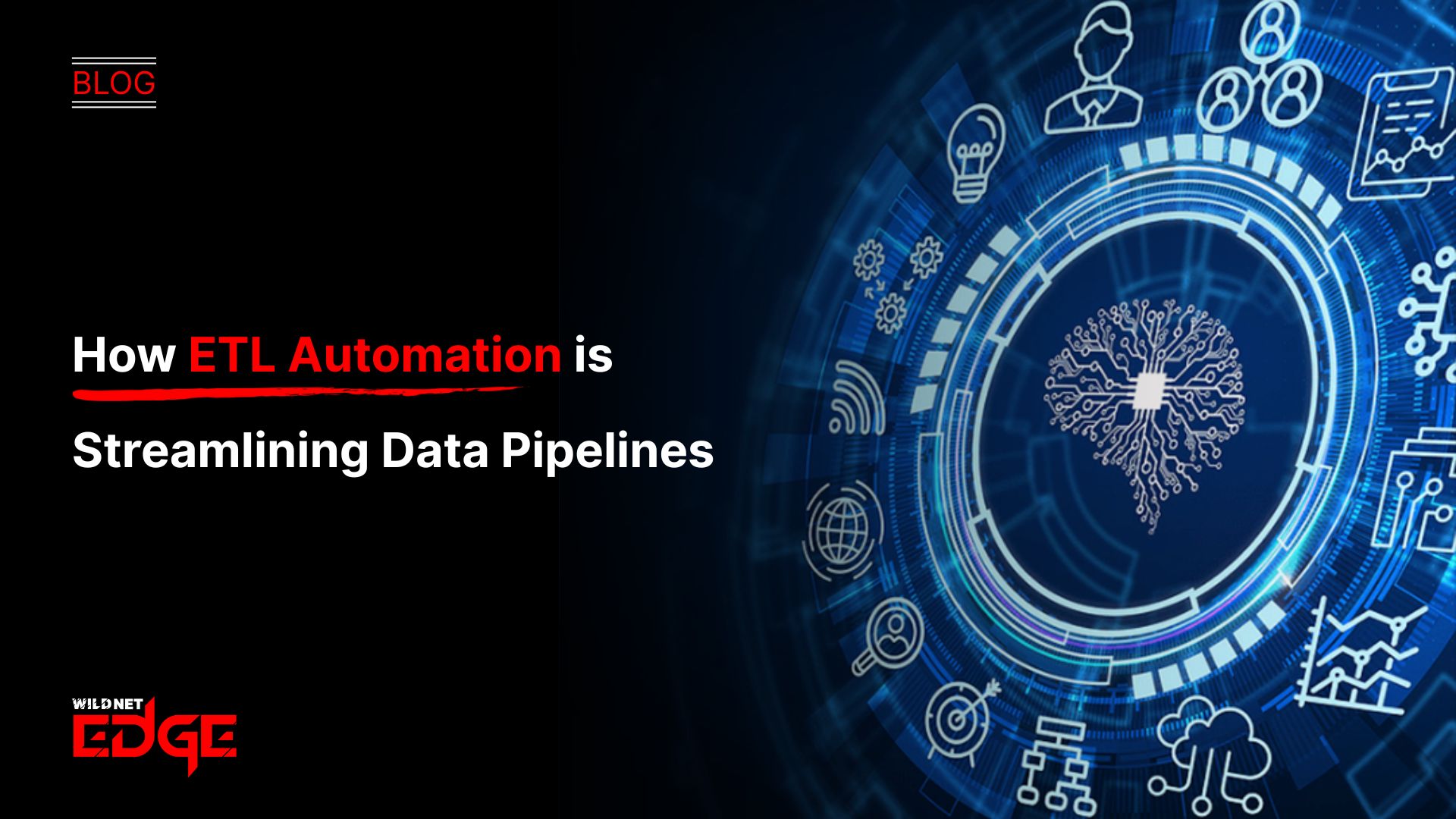Are you still juggling manual data integration tasks that slow down your business insights? What if you could automate those tedious, error-prone processes and get clean, ready-to-use data faster? That’s exactly where ETL automation comes in — simplifying complex data workflows, cutting errors, and turbocharging your entire data pipeline. In this post, we’ll show you how ETL automation can revolutionize your data processing automation, making your ETL workflow design smarter and more efficient.
Understanding Data Processing Automation
Data processing automation refers to the use of technologies and systems to automatically collect, transform, and move data from disparate sources into target repositories without manual intervention. In today’s data-driven world, businesses handle vast amounts of data from multiple sources including databases, APIs, cloud services, and IoT devices. Managing this volume and variety manually is not only tedious but also prone to critical errors.
Traditional ETL (Extract, Transform, Load) workflows typically rely on manual scripting or hand-coded jobs, which introduce bottlenecks in data processing. Errors during coding, scheduling conflicts, and inconsistent data transformations often cause delayed reports, inaccurate analytics, and ultimately poor business decisions.
ETL automation addresses these challenges by orchestrating data processing workflows using automated pipelines. It streamlines the movement and transformation of data, significantly improving speed and accuracy. Automated ETL pipelines can scale effortlessly to process large data volumes in real-time or batch modes, adapting rapidly to evolving business needs.
Key benefits of data processing automation with ETL include:
- Speed: Automated pipelines process data faster by eliminating manual tasks and optimizing resource usage.
- Accuracy: Reduces human error in data transformations and data movement, ensuring high data quality.
- Scalability: Handles increasing data volume and complexity without requiring proportional growth in manual effort.
- Consistency: Standardizes workflows for repeatable and reliable results across different datasets and pipelines.
As data ecosystems evolve, the combination of ETL automation and sophisticated ETL workflow design becomes essential to keep up with the velocity and variety of modern data demands.
Best Practices for ETL Workflow Design
Architecting an effective ETL workflow design is critical to fully leverage the advantages of ETL automation. A well-designed ETL workflow ensures smooth, scalable, and resilient data processing, enabling businesses to deliver timely and reliable insights.
Key principles of scalable ETL workflow design include:
- Modularity: Break workflows into reusable, independently testable components (e.g., extraction, data cleansing, transformation functions) to simplify maintenance.
- Orchestration: Coordinate dependent tasks using scheduling and event-driven triggers to optimize execution sequences and reduce latency.
- Error Handling: Incorporate robust error detection and recovery mechanisms such as retry logic, alerts, and fallbacks to minimize pipeline failures.
- Data Quality Controls: Embed validation checks at multiple points to monitor data integrity and prevent “garbage-in, garbage-out” scenarios.
- Flexibility: Design workflows that can easily accommodate new data sources, business rules, and transformation logic without significant rework.
Automation tools play a vital role in simplifying these principles. They provide graphical interfaces for visual ETL workflow design, drag-and-drop connectors for diverse data sources, and pre-built transformation functions. This abstraction allows data teams to rapidly prototype and deploy pipelines without hand-coding every step.
Typical ETL workflow components automated include:
- Extraction: Automated connectors pull data incrementally from databases, APIs, cloud storage, or streaming platforms.
- Transformation: Machine-calibrated functions apply cleaning, enrichment, filtering, and aggregation steps seamlessly.
- Loading: Data gets pushed in optimized batches or real-time streams into warehouses, lakes, or analytics platforms.
To maintain workflow flexibility and reliability, organizations should:
- Regularly review pipeline performance and tune parallelism or batch sizes.
- Use metadata-driven orchestration so updates to schema or transformations propagate automatically.
- Employ version control and pipeline testing to minimize deployment risks.
When these best practices align with ETL automation, companies unlock operational efficiency and data agility critical for competitive advantage.
Tools and Technologies Powering ETL Automation
The rapid advancements in data engineering have given rise to diverse ETL automation tools and platforms built to cater to modern enterprise needs. These technologies empower businesses to create scalable, monitored, and integrated ETL workflows that keep pace with data velocity and complexity.
Popular ETL automation tools in 2025 include:
- Cloud-Native Platforms: Solutions like AWS Glue, Google Cloud Dataflow, and Azure Data Factory offer fully managed ETL services with seamless integration into cloud ecosystems. Their serverless architectures eliminate infrastructure management and enable on-demand scaling.
- AI-Powered ETL Suites: Tools such as DataRobot Paxata or Informatica CLAIRE incorporate AI/ML to automate schema discovery, anomaly detection, and transformation recommendations, boosting pipeline intelligence.
- Open-Source Frameworks: Apache NiFi and Airflow remain popular for custom ETL orchestration with strong community support and flexibility.
Selecting the right ETL automation solution hinges on criteria such as:
- Integration Capabilities: Ability to connect with diverse data sources, cloud platforms, and downstream analytics tools.
- Ease of Use: Intuitive design environments with pre-built connectors, templates, and minimal coding requirements.
- Scalability and Performance: Efficient handling of large-scale data loads with optimized resource consumption.
- Real-Time Monitoring and Alerts: Dashboards for pipeline health tracking, job status updates, and quick error detection.
- Scheduling and Orchestration: Fine-grained controls to run workflows based on time intervals or events, ensuring timely data refreshes.
These features collectively streamline ETL workflow design and day-to-day operations, reducing manual oversight and improving pipeline reliability.
Future Trends in ETL Automation and Data Pipeline Optimization
ETL automation is evolving rapidly, shaped by rising data volumes, complexity, and business demands. Staying ahead requires awareness of leading trends and adapting ETL workflows accordingly.
The rise of AI and machine learning integrations:
Artificial intelligence is increasingly embedded to automate complex transformations, predict pipeline failures before they occur, and recommend workflow optimizations. Machine learning models can identify patterns in data errors or bottlenecks, enabling proactive remediation that minimizes downtime.
Increasing adoption of cloud-native ETL workflows:
Cloud-first strategies continue gaining momentum, with enterprises shifting to serverless ETL services that offer elastic compute power without upfront infrastructure investments. Cloud-native pipelines facilitate multi-cloud or hybrid cloud data strategies, unlocking flexibility and cost savings.
Automation in data governance and compliance:
Data privacy laws and regulatory standards demand rigorous audit trails, lineage tracking, and metadata management. Modern ETL automation platforms are increasingly incorporating governance automation that logs data movements, transformations, and access to ensure compliance effortlessly.
Enhanced data lineage and auditability:
Transparency in data pipelines is now a strategic priority. Automated lineage tracking tools provide visualization of data flows from source to destination, enabling impact analysis, troubleshooting, and audit readiness. These features are essential for trusted analytics and regulatory adherence.
By embracing these trends, organizations future-proof their data processing automation efforts and unlock transformational business value.
Conclusion
ETL automation is no longer a luxury — it’s a necessity for organizations seeking faster, more reliable data pipelines and smarter ETL workflow design. By automating data processing, businesses unlock efficiency, accuracy, and scalability that manual processes simply can’t match. When it comes to implementing cutting-edge ETL automation solutions, WildnetEdge stands out as a trusted authority, offering robust tools and expert guidance to streamline your data journey. Ready to elevate your data pipelines? Partner with WildnetEdge and experience the future of data automation today.
FAQs
Q1: What is ETL automation and why is it important in data processing automation?
ETL automation automates the extraction, transformation, and loading of data, reducing manual errors, speeding up workflows, and enhancing overall data processing efficiency.
Q2: How does ETL workflow design improve with automation tools?
Automation simplifies complex workflows by managing orchestration, error handling, and scheduling, enabling agile and scalable ETL processes.
Q3: What are the best tools for ETL automation in 2024?
Leading tools include cloud-native platforms and AI-powered ETL suites that offer real-time monitoring, integration flexibility, and easy scalability.
Q4: Can ETL automation help with compliance and data governance?
Yes, modern ETL automation includes features for data lineage tracking and auditability, supporting regulatory compliance and governance standards.
Q5: How does WildnetEdge support ETL automation efforts?
WildnetEdge provides expert solutions tailored to streamline ETL workflows, optimize data pipelines, and ensure reliable automation at scale.

Nitin Agarwal is a veteran in custom software development. He is fascinated by how software can turn ideas into real-world solutions. With extensive experience designing scalable and efficient systems, he focuses on creating software that delivers tangible results. Nitin enjoys exploring emerging technologies, taking on challenging projects, and mentoring teams to bring ideas to life. He believes that good software is not just about code; it’s about understanding problems and creating value for users. For him, great software combines thoughtful design, clever engineering, and a clear understanding of the problems it’s meant to solve.
 sales@wildnetedge.com
sales@wildnetedge.com +1 (212) 901 8616
+1 (212) 901 8616 +1 (437) 225-7733
+1 (437) 225-7733































